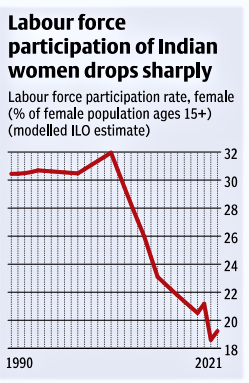7667766266
enquiry@shankarias.in
Labourforce participation of Indian women is dropping precariously and urgent policy actions are needed to address the issue.
What is the status of participation of Indian women in the work force?
The World Economic Forum’s gender gap report 2022, where India was ranked at 135th position out of 146 countries.

Reasons unique to India
An IMF blog estimates that closing the gender gap for countries ranking in the lower half in gender inequality could increase GDP by an average of 35%.
Reference